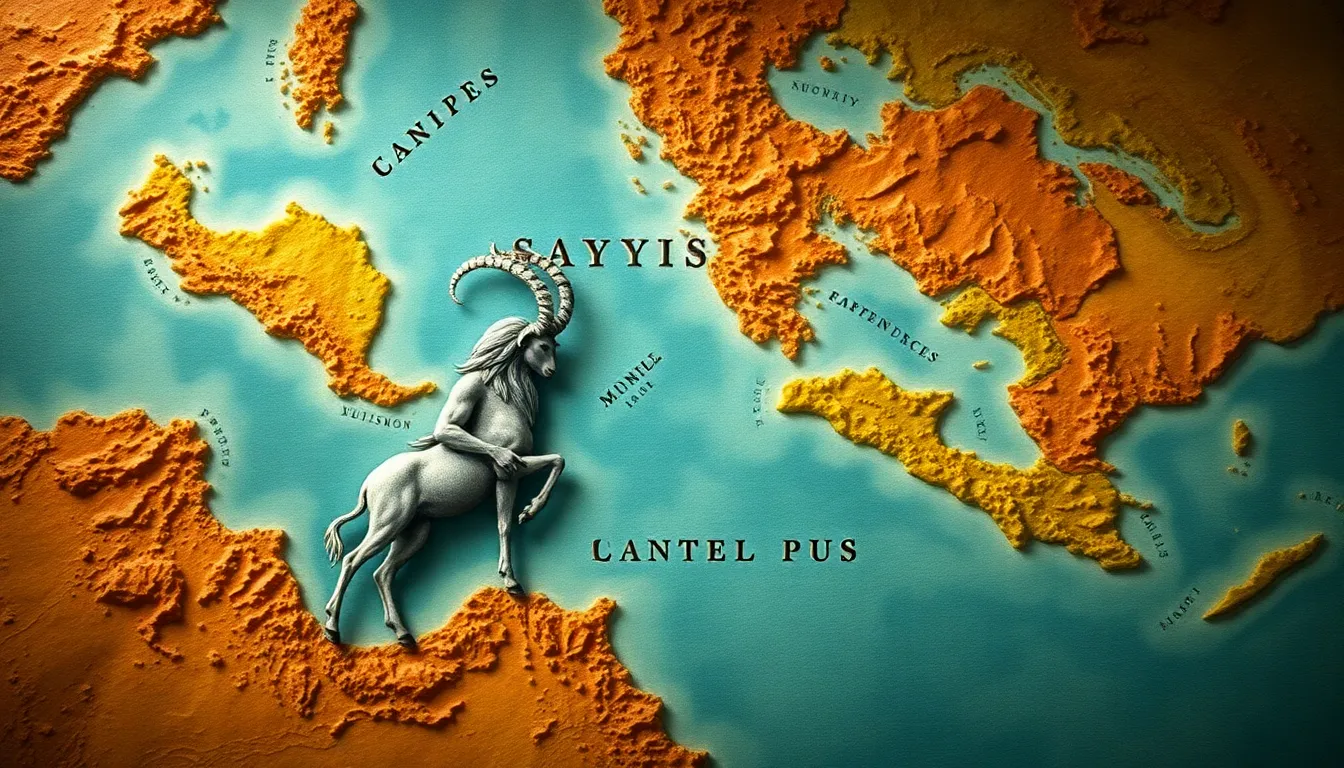Satyrs in Mythical Geography: Mapping Their Legendary Lands
I. Introduction to Satyrs
Satyrs are fascinating creatures in Greek mythology, often depicted as half-human and half-goat, embodying the wild and untamed aspects of nature. Characteristically, they are known for their playful demeanor, love for music, and an insatiable appetite for revelry. Typically associated with Dionysus, the god of wine and fertility, satyrs personify the duality of human nature, combining the civilized with the primitive.
Historically, satyrs can be traced back to ancient texts, where they play crucial roles in various myths. They were not only companions of gods but also significant figures in the narratives that explored human emotions, desires, and the natural world. Their importance in ancient cultures cannot be overstated, as they represented both the joys and the dangers of liberation from societal constraints.
II. The Origins of Satyr Mythology
The origins of satyr mythology can be found in early Greek literature, with references dating back to works such as Homer’s “Iliad” and “Odyssey.” In these texts, satyrs were often depicted as mischievous creatures who roamed the forests and hills, engaging in antics that delighted and sometimes frustrated both mortals and gods.
Satyrs are closely linked to themes of nature and fertility. Their association with Dionysus highlights their role as symbols of fecundity and the life force of the earth. Over time, depictions of satyrs evolved; while early representations focused on their goat-like features, later artistic interpretations showcased them with more human traits, reflecting changes in societal attitudes towards nature and civilization.
III. The Geographic Landscape of Satyr Legends
Key regions in Greece are often associated with satyr legends. Understanding these locations provides insight into the cultural significance of satyrs in mythology.
- Arcadia: Known as the idyllic home of satyrs, Arcadia represents a pastoral paradise where nature reigns supreme. This mountainous region symbolizes the untamed wildness that satyrs embody.
- Mount Olympus: As the residence of the gods, Mount Olympus is frequently depicted as a site of divine revelry where satyrs participated in the festivities of the gods.
- Other Notable Locations: Various forests, groves, and rivers throughout Greece are also linked to satyr mythology, emphasizing their connection to the wilderness.
These locations hold symbolic meanings, representing the balance between civilization and nature, and serving as a backdrop for the interactions between gods, satyrs, and humans.
IV. Satyrs and Their Natural Habitats
Satyrs are inherently tied to natural environments, thriving in forests, hills, and near rivers. These habitats provide the perfect backdrop for their playful and hedonistic lifestyles.
The role of nature in satyr mythology is profound, as it reflects the chaotic and unpredictable aspects of life. Satyrs are often seen dancing in the woods, playing musical instruments, and engaging in wild festivities, embodying the spirit of freedom and unrestrained joy.
Moreover, satyrs frequently interact with other mythical creatures, such as nymphs and centaurs. These interactions often highlight themes of love, rivalry, and the celebration of life, further enriching the tapestry of Greek mythology.
V. Cultural Interpretations of Satyrs
Satyrs have been portrayed in various forms of Greek art and literature, from pottery and sculptures to plays and poems. These representations often emphasize their playful nature, revelry, and connection to wine and fertility.
In Roman mythology, satyrs were adapted into the figure of the faun, maintaining similar characteristics but also taking on distinct traits that reflected Roman culture. This adaptation demonstrates the influence of satyrs beyond Greek mythology, showcasing their enduring appeal across cultures.
Modern representations of satyrs can be found in literature, film, and popular culture, where they are often depicted as mischievous yet charming characters. Their legacy continues to inspire contemporary interpretations, illustrating the timeless nature of their stories.
VI. The Satyr’s Relationship with Humans
In many myths, satyrs engage in encounters with humans, often resulting in humorous or chaotic situations. These interactions highlight the unpredictable nature of satyrs, as they can be both playful and mischievous.
Satyrs symbolize hedonism and freedom, representing the human desire to escape societal norms and indulge in the pleasures of life. This duality reflects the complex nature of satyrs, as they oscillate between being carefree spirits and troublesome tricksters.
VII. Mapping the Satyr’s Legendary Lands
Creating a mythical map of satyr-associated locations involves examining various myths to trace the movement and significance of satyrs across different regions.
Analyzing the narratives reveals patterns in satyr movement, often linked to the changing seasons, festivals, and the cycles of nature. Geography plays a crucial role in shaping satyr narratives, as the landscapes they inhabit influence their behavior and interactions.
VIII. Conclusion
In summary, satyrs hold a significant place in mythical geography, representing the intricate relationship between humanity and nature. Their stories reflect deep cultural values and the importance of the natural world in ancient societies.
The enduring legacy of satyr myths continues to inspire interest and exploration in the field of mythology. As we delve deeper into these captivating tales, future research may uncover new interpretations and connections that further enrich our understanding of these legendary creatures.




